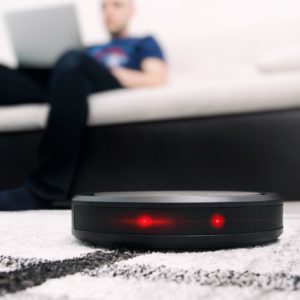 HVAC, facility management, and construction are catching up with other industries in adopting the latest technologies. Options like drones and robotics are on their way to becoming commonplace as more industries implement Internet of Things (IoT) technology due to the labor shortages trades are facing all over North America.
HVAC, facility management, and construction are catching up with other industries in adopting the latest technologies. Options like drones and robotics are on their way to becoming commonplace as more industries implement Internet of Things (IoT) technology due to the labor shortages trades are facing all over North America.
While the robot technology coming to market today has yet to completely replace skilled laborers, the machines can take on essential, rudimentary tasks. Robots can work alongside skilled human workers, making their job easier.
Robot and building automation history
Manufacturing robots have been in use since 1961 when General Motors put them to work in a foundry. Since then more and more have been used to do jobs like automotive painting and welding. As robot technology has improved, it’s taken on various packaging and assembly-line tasks.
For a long time, automation happened only in controlled conditions where the machines did not come into contact with people. Robots had no way to perceive the surrounding environment, which makes them potentially dangerous.
Sensors are improving all the time, and artificial intelligence capabilities are more sophisticated than ever before. This means it won’t be long before robotics finds its way out of factories and into facilities management. New sensors based on sonar or LIDAR (light imaging, detection, and ranging) give machines an ability to “see” or at least detect people and things in their environment.
Building automation has been around much longer than robotics. The first thermostat, invented by a schoolteacher named Warren Johnson in 1883, marks the first instance of building automation. Johnson went on to form the company Johnson Controls.
That first thermostat triggered a light in the boiler, which signaled the maintenance person to stoke the furnace. Today, thermostats communicate with computer chips that relay messages to the HVAC system, turning on heating and cooling systems as needed based on room temperature and humidity readings.
With the right system of sensors and processors, robots could automate activities like cleaning and maintaining buildings, from windows and floors to HVAC ducts. This technology is already available. A small mobile robot, the Anataroller used in combination with a Cable EYE CD inspection camera, can inspect and clean ducts.
Robotics for safety & security
Have you ever been on a job site and wondered about the level of safety? Imagine if you could send out a machine to test the building for you. These robots already exist; they are being used by the military and in the nuclear industry.
A company called Knightscope has developed robots that can scan a particular area for intruders. They use a combination of thermal imaging and video to scan a facility or job site perimeter. And two-way audio is available as well. When the robot detects an intruder, the system can warn the intruder that police are on their way.
Most of Knighscope’s robots are mobile, and one is specifically designed for rugged terrain. A stationary model will soon include weapon detection, which would be helpful to law enforcement responding to a security issue.
If robots are proven to be effective, they might one day become the standard building site security option.
Other uses for robots in the building industry
Most new developments in robotics involves taking on tasks humans are reluctant to do.
Construction Robotics is developing machines to help with masonry. One robot called SAM can lay bricks, and another called MULE can lift up to 135 lbs. MULE could be modified to help with any lifting work, making it a potential HVAC assistant as well.
One Knightscope model comes with license plate recognition, which allows facility managers to create blacklists for unwelcome vehicles as well as track how a lot is being utilized.
It’s may still be early days in terms of robot development, but chances are good that if there’s a task you would rather have a robot do, some new startup is probably already working on it.




